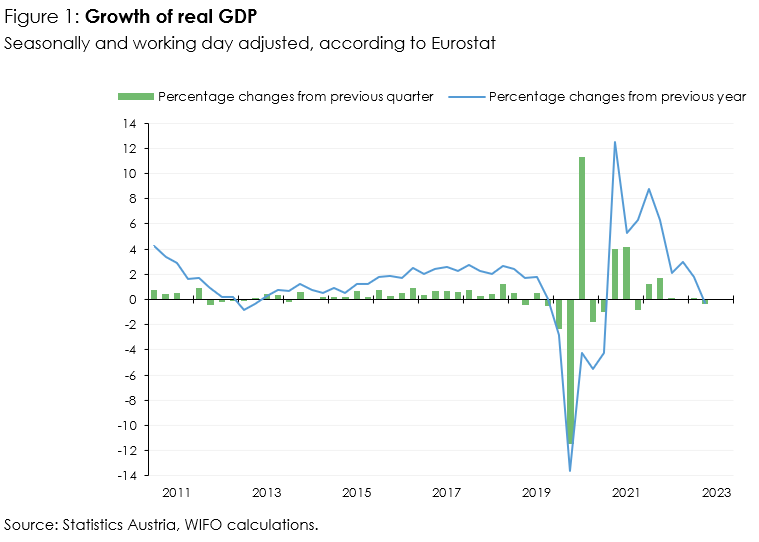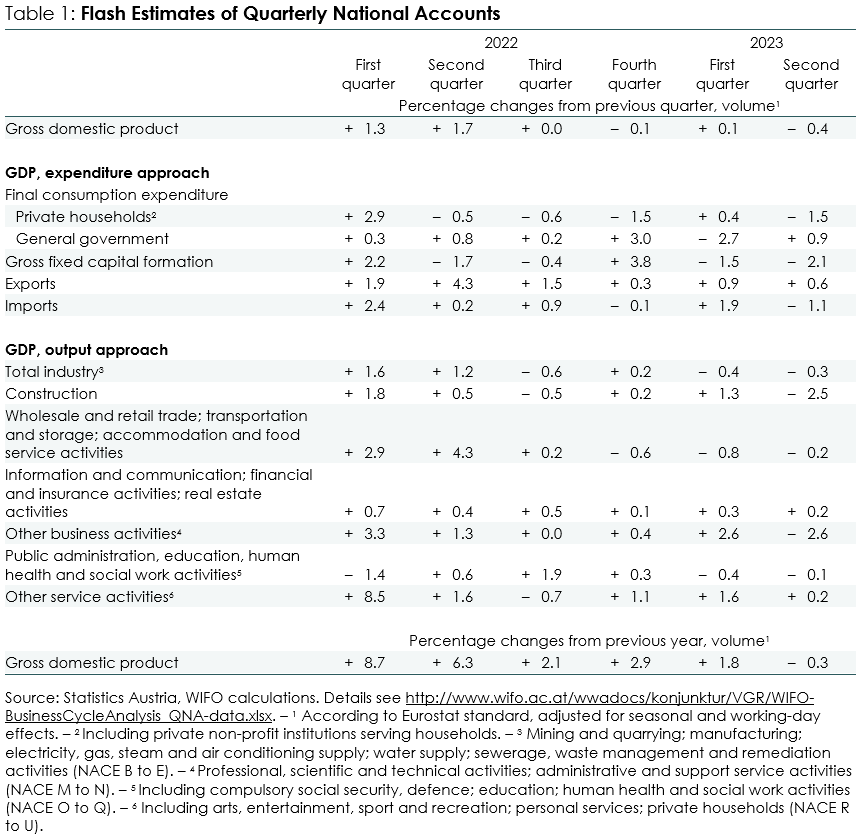
Economic Output Declined in the Second Quarter of 2023
According to preliminary estimates, GDP decreased by 0.4 percent in price-adjusted terms in the second quarter of 2023 (first quarter of 2023 +0.1 percent) compared with the previous period (key figure according to Eurostat). On a year-on-year basis, this means a decline of 0.3 percent compared with the second quarter of 2022.
After the domestic economy had already been stagnating since the third quarter of 2022, the recession in industry and losses in the construction industry in particular weighed on the current overall economic development. In industry (NACE 2008, sections B to E), value added fell by 0.3 percent in the second quarter (first quarter ‑0.4 percent). In the construction industry, it fell by 2.5 percent (first quarter +1.3 percent).
The picture for the service sectors was heterogeneous. While value added in other business activities (NACE 2008, sections M and N) declined markedly (‑2.6 percent), trade, transport, accommodation and food service activities (NACE 2008, sections G to I) almost stagnated (‑0.2 percent). Once again, positive impulses came from tourism. Information and communication, financial and insurance activities, and real estate activities (NACE 2008, sections J to L) expanded by 0.2 percent.
High price momentum dampened the development of private consumer spending. Consumer demand from households (including private non-profit institutions serving households) fell by 1.5 percent compared with the previous quarter. Public consumption, on the other hand, expanded by 0.9 percent currently.
In the wake of weak industrial activity, foreign trade was subdued in the second quarter. Overall, exports increased by 0.6 percent. With imports down 1.1 percent, net exports made a positive contribution to overall economic growth.
Investment demand has recently been curtailed once again, with gross fixed capital formation falling by 2.1 percent quarter-on-quarter in the second quarter (first quarter ‑1.5 percent).
Important information:
The WIFO Flash Estimate is a first estimate for the past quarter. It is based on the Quarterly National Accounts of Statistics Austria and includes GDP as well as components in the form of seasonally and working-day adjusted rates of change compared with the previous quarter (key figure according to Eurostat standard).
At the beginning of September 2023, Statistics Austria will publish quarterly GDP data and main aggregates for the second quarter of 2023 based on more complete data.



